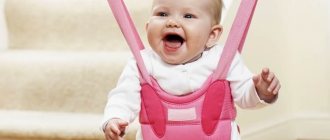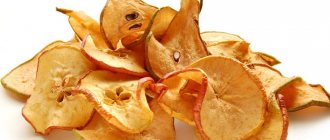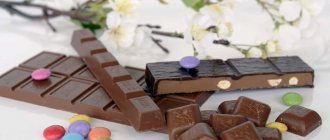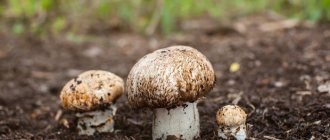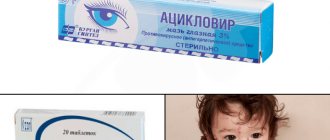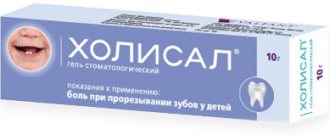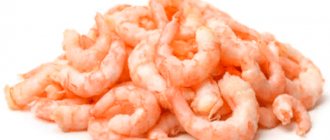Prepare:
- rubber gloves and apron;
— a rubber can with a tip suitable for the age of the container;
— a container with water at room temperature
(+
20
+ 22°C);
- Vaseline or sterile vegetable oil;
— tray for waste material.
1. Lay down an oilcloth and cover it with a diaper.
2.
Wash and dry your hands, put on an apron, gloves, and a mask.
3. Take a rubber can and release the air from it.
4. Fill a bottle with water at a temperature of + 20 + 22°C.
5. Lubricate the tip with oil using the pouring method.
6. Place the child on his left side with
legs bent and pulled towards the stomach.
7. Spread the child’s buttocks with fingers 1 and 2 of the left hand and fix the child in this position.
8. Lift the can with the tip up and carefully release the air by pressing it from below with the thumb of your right hand.
9. Insert the tip into the anus without opening the can, directing it first to the navel, and then, overcoming the sphincters, parallel to the tailbone to a depth of 3-8 cm.
Rice. 40 Giving an enema
10.
Introduce water by slowly pressing the canister,
11.
Remove the tip without releasing the container.
12.
Place the child on his back, squeezing his buttocks for
3-5
minutes until the urge to defecate appears.
13. Wash the child after defecation, dry, and dress.
14. Remove your apron and gloves, place a can of disinfectant in the disinfectant solution.
15. Wash and dry your hands. Note:
— The required amount of water for a cleansing enema is taken:
A)
newborn
25-30
ml;
b) infants and older based on 100
ml|
per
year of life, but not more than
1.5
liters
— A child up to 6 months can be placed on
sleep well and raise your legs up.
What is an enema and what can it be?
What exactly is an enema? An enema is a medical procedure that involves injecting a liquid (water or medication) into the rectum.
I distinguish several types of enemas, depending on their purpose:
- Cleansing. Indicated for constipation, bloating, food poisoning, and for emptying the intestines of stool and gases. Performed using chilled boiled water.
It is very important that the water is exactly 24 - 26 ° C (room temperature). If you use hot water, you can cause a burn to the intestinal mucosa. Also, hot water dilates blood vessels and is well absorbed into the bloodstream, and the rectum is very well supplied with blood. Entering the bloodstream, water will pull with it all the toxins accumulated in the stool. “Fecal intoxication” may occur. The most terrible condition that can develop with this complication is cerebral edema.Therefore, before performing an enema, always consult a doctor, or even better, entrust the procedure to specialists.
- Laxative. Vaseline oil or glycerin is injected into the rectum with an enema. You can dilute them with a small amount of saline solution. This enema for an infant is indicated for constipation, especially when the baby has a dense consistency of stool. The oil solution softens the stool and helps the intestines empty.
- Hypertensive. The enema bulb is filled with a hypertonic solution (2.5%, 5% or 10%) of table salt.
This type of enema cleanses the intestines very well during prolonged constipation and is most often performed in a hospital setting by medical workers. The salty solution draws out the intestinal contents well. If you decide to prepare a hypertonic solution at home using water and salt, you must mix the solution thoroughly! Undissolved salt crystals can cause damage to your baby's intestinal lining. It is also necessary to observe the temperature regime of the solution. - Siphon. Such an enema is performed only in a hospital setting and is a purely medical procedure. A large volume of solution causes high intestinal lavage. Indicated for poisoning or fecal “blockages”.
- Medicinal enema. This is a method of administering a drug. Performed as prescribed by a doctor.
Algori
This study is carried out to determine the nature of the bacterial form and its sensitivity to bacterial drugs. The most reliable results are obtained when studying before treating a child with antibacterial drugs. The day before, the child should not be given food products and medicinal substances that can change the color of stool: blueberries, beets, chokeberries, hematogen, bismuth, iron preparations, etc. Stool cannot be examined after an enema, the use of rectal suppositories, taking laxatives, during diarrhea, in the first days after an X-ray examination of the gastrointestinal tract with the administration of barium sulfate.
Prepares a cleanly washed pot, scalded with boiling water; puts the child on the potty for independent defecation; takes a cleanly washed glass bottle or jar with a wooden stick and transfers part of the feces into this container; g feces, depending on age; closes the container; writes an accompanying document. The method is based on counting the number of formed elements of red blood cells, leukocytes and cylinders per unit volume of urine.
For research, an average portion of morning urine is taken, preferably in the morning, but if necessary at any time of the day. Before collecting the analysis, toilet the urethra, collect urine in a dry, clean container. Deliver to the laboratory no later than an hour after collection! To assess the ability of the kidneys to concentrate and dilute primary urine, the Zimnitsky test is used. In this case, urine is collected every 3 hours for 24 hours and its quantity and specific gravity are determined.
Before starting the study, release the nightly portion of urine into the toilet at 6 a.m. Each portion is collected in a clean, numbered, separate container (8 jars). The next morning, all jars are sent to the laboratory. On each jar they put a serial number, last name, first name, patronymic of the patient, room number, time interval. A child with glomerulonephritis may have hematuria, cylindruria, oliguria, and with the development of renal failure, hypoisosthenuria.
In this case, indicate the date of vaccination, dose, control number, batch number of the drug, and the manufacturing institute. Depending on the emotional state of the child, you can open his mouth with a spatula, or use a mouth dilator for this purpose.
The amount of liquid for gastric lavage also depends on the age of the child in order to avoid water poisoning; For gastric lavage in infants, a thinner probe than in older children is used, and instead of a funnel, a syringe is used. The following rule must be strictly observed - the amount of fluid introduced should be almost equal to the amount withdrawn.
This page was last modified: ; Page copyright infringement. Feedback - Main page Selected articles Random article Educational articles New additions Feedback. The influence of society on humans Preparation of disinfectant solutions of various concentrations Practical work on geography for grade 6 Organization of the work of the treatment room Processing of reusable medical products Changes in inanimate nature in the fall Cleaning of the treatment room Solfeggio.
All rules for solfeggio Beam systems. Determination of support reactions and pinching moments. Main page Selected articles Random article Educational articles New additions Feedback TOP The influence of society on humans Preparation of disinfectant solutions of various concentrations Practical work on geography for grade 6 Organization of the work of a treatment room Processing of reusable medical products Changes in inanimate nature in the fall Cleaning of a treatment room Solfeggio.
This page was last modified: ; Copyright infringement of infopedia page.
An enema for a child works exactly the same as an enema for an adult. In the fight against constipation, cleansing names are most often used, which allow you to simply remove feces from the intestines along with water.
What volume of cleansing enema does a child need?
In addition to the temperature regime, you need to know how much solution can be administered to the baby. When administering a cleansing enema, the amount of fluid administered directly depends on the age of the child. The younger the baby, the less solution is needed to empty the intestines. There are standards for the volumes permissible for performing an enema on a child.
| Up to two months | 30 ml |
| 2 – 4 months | 60 ml |
| 6 -9 months | 70 – 100 ml |
| 9 – 12 months | 120 – 170 ml |
| 1 – 2 years | 200 – 250 ml |
| 25 years | 300 ml |
| 6 – 10 years | 400 – 500 ml |
Giving a cleansing enema to young children
⇐ PreviousPage 21 of 38Next ⇒Purpose: to cleanse the lower part of the large intestine from feces and gases.
Indications: stool retention, poisoning, preparation for operations, endoscopic, ultrasound and x-ray examinations of the abdominal organs, before administering a medicinal enema.
Contraindications: inflammatory diseases in the anus, rectal prolapse, bleeding, acute surgical diseases.
Equipment: sterile pear-shaped balloon, gloves, petroleum jelly, spatula, disinfectant solutions, containers for disinfection.
Safety precautions: do not leave the child unattended.
Possible problems: anxiety, fear, parental refusal to perform the manipulation.
The procedure is carried out up to 6 months - on the changing table in the ward, for older children - in the enema room.
Sequencing:
1. Explain to mom the meaning and course of the manipulation.
2.
Wash your hands.
3. Place an oilcloth on the changing table, with a diaper on top
4. Fill the bottle with water at room temperature.
5. Lubricate the tip of the balloon with Vaseline.
6. Lay the child on his left side, bring his legs to his stomach. Place children in the first year of life on their backs with their legs raised up. The child must urinate first.
7. Take a water bottle in your right hand and release the air from it.
8. Carefully, without effort, insert the tip first towards the navel, and then parallel to the spine (tailbone), effortlessly overcoming the external and internal sphincters of the anus.
9. Slowly pressing the balloon, introduce water into the intestines.
10. After injecting the liquid, squeeze the child’s buttocks with your left hand, and carefully remove the tip with your right hand, inserting a thick cotton swab with Vaseline between the buttocks instead.
11. Hold the child’s buttocks squeezed for some time to prevent water from flowing out until intestinal motility increases ~ 8-10 minutes.
12. After completing the procedure, wash the child and dry the skin.
13. Treat the cylinder in accordance with the requirements of sanitary and epidemiological regulations.
Note: for giving an enema to infants use:
- pear-shaped rubber cylinders (“pears”) with rubber tips of different capacities: the smallest – 15 ml; the largest are 270 ml. The cylinders have numbers from 1 to 9. Each subsequent number is 30 ml more than the previous one (for example, No. 1 - 30 ml; No. 2 - 60 ml, etc.). The smallest bottle is No. (i.e. 15 ml).
For children over 5 years old, use a 500 ml container.
— balloon No. 2 (50 ml) — in the first 2-3 months
- balloon No. 3-4 (75-100 ml) - at 6 months
— balloon No. 5 (150 ml) — at 1 year
- balloon No. 5-6 (180-200 ml) - for children 2-3 years old.
For older children, an Esmarch mug is used to perform a cleansing enema.
Amount of liquid administered:
– newborns – 25-30ml
– 1-3 months – 50-60 ml
– 3 months – 1 year – 100-150 ml
– 1-2 years – 200 ml
– from 2 years to 5 years – 300 ml
For static constipation, the temperature is increased to 37-38º C; for atonic constipation, the temperature is increased to 20-22º C
To enhance the effect of the enema, you can add to 0.5 liters of water:
1-1.5 tbsp. glycerin or 0.5 - 1 tbsp. table salt or 0.5 - 1 tbsp. vegetable oil.
Before the procedure, the patient puts on a rubber (or oilcloth) apron and rubber gloves.
Depth of insertion of the tip for children
- up to 1 year for newborns - 1-3 cm
- up to 3 years - 3-4 cm
- up to 5 years - 4-5 cm
– from 5 to 10 years – 5-6 cm
– over 10 years – up to 10-12 cm
For receiving stool in children up to 8 months. A loosely crumpled diaper is placed between the legs, and for children older than 8-10 months. It is recommended to additionally plant it in a pot.
If the enema does not work, it is recommended to repeat it after 2-4 hours.
⇐ Previous21Next ⇒
Site search:
What is needed to perform a cleansing enema?
- First of all, you need to prepare the place for the procedure.
- On a flat surface (changing table or crib), you need to lay an oilcloth and put a clean diaper or sheet on top of it.
- To perform an enema for a child under 4-5 years old, use a syringe. A syringe is a pear-shaped rubber canister with a rubber or plastic tip. There are different volumes of “pears” - from 30 ml, for the smallest children, to 360 ml. You can buy a syringe at any pharmacy; its cost is on average 100 rubles. For children over 4 years old, an Esmarch mug is required to perform an enema. This is a rubber cylinder with a volume of 2 liters, from which comes a silicone tube with a removable plastic tip. The cost of such a system in pharmacies is 200 - 500 rubles.
- Before performing an enema, you should prepare an enema solution, petroleum jelly or baby cream. For children older than one year, it is necessary to prepare a potty in advance.
How to perform a cleansing enema on a baby?
- First of all, before giving an enema to a baby, you need to prepare everything you need so as not to be distracted during the procedure.
- Before performing an enema, you should wash your hands.
- The syringe is boiled for about 30 minutes. Then we wait until it cools down.
- We squeeze the can to release the air, then slowly unclench it and draw in the required amount of solution.
- The tip of the bulb is lubricated with Vaseline, vegetable oil or baby cream to reduce the risk of intestinal trauma.
- The baby lies on his back, his legs are pressed against each other and raised slightly upward. Children older than one year can be placed on their left side, pressing their knees to their stomach.
- We spread the buttocks with our fingers and carefully insert the tip into the rectum to a depth of 2 - 4 cm.
- Slowly squeezing the bulb, we introduce liquid into the intestine.
- Carefully remove the tip and squeeze the buttocks for a few minutes.
- After defecation, we wash the baby, and thoroughly wash and dry the syringe.
Cleansing procedures
Before performing a cleansing enema, it is necessary to prepare an oilcloth on which the child will lie. Then fill Esmarch's mug with boiled, heated water, lubricate the tip with Vaseline or baby cream and place the child on his left side with his legs bent.
With the left hand, the buttocks are spread apart, and with the right hand, the tip is carefully inserted in the direction of the navel, and then parallel to the tailbone. The tip should advance without obstacles to a depth of 5 cm.
If there are obstacles along the way of insertion of the tip or liquid, or the child experiences pain, the enema is canceled.
First, the air must be released from the Esmarch pear or mug until water appears from the tip. The pear is removed from the anus in a compressed form. Then the child's buttocks are brought together, asked to turn over, or turned over on his stomach for 10 minutes. Then they ask the child to empty his bowels or sit him on the potty.
For newborns, the water temperature should be within 30-31 degrees, in the first half of the year up to 27-28 degrees, at the age of 1 year - 26 degrees, and older - 20-22 degrees.
Performing a cleansing enema for children over 4 years of age
- To perform the procedure, we use Esmarch's mug.
- The solution is poured into a rubber container. The volume depends on the age of the child. We also make sure to observe the temperature regime.
- We release a small amount of the contents of the pear to displace the air from the tube.
- The balloon should be fixed 1 meter above the level of the lying child to ensure a downward flow of fluid.
- We connect the tip to the system, lubricate it with Vaseline or vegetable oil. Plastic tips can be disposable. Then we take it out of the sterile packaging and throw it away after the procedure. If the tip is reusable, it must be boiled before use.
- The child lies on his left side with his knees tucked to his stomach.
- The tip is carefully inserted into the rectum 2 cm towards the abdomen, and then 2 - 4 cm posteriorly, towards the tailbone.
- The clamp on the tube opens and the solution enters the intestines.
- The tip is removed, and the child must lie down for another 10 minutes until the unbearable desire to defecate.
- Then the child is seated on the potty or toilet to have a bowel movement.
In addition to cleansing with liquid, an enema has an irritating effect that stimulates intestinal motility, which helps with bowel movements. But stool does not always come out after an enema. It is necessary to ensure that all the liquid introduced into the intestines comes out. Sometimes emptying does not occur immediately, but after 30 - 50 minutes.
A correctly performed procedure is harmless and alleviates the baby’s condition. If you are not confident in yourself, you should not undertake manipulation. Contact your pediatrician who will examine your child and help with performing an enema.
kroha.info
Question answer
When is it better to do an enema in the morning or evening?
Maximum intestinal activity is observed at 5–7 am, at this time it is recommended to carry out all cleansing procedures - they need to be done on an empty stomach. You can give an enema in the evening - 3-4 hours after eating, 2-2.5 hours before going to bed. The least favorable time is 17–19 hours.
What kind of water should I use for an enema?
Regular tap water is not suitable; it must be brought to a boil and cooled. The optimal water temperature is 37 degrees, boiling water is absorbed in the intestines, does not dissolve harmful substances, and cold water can provoke spasms.
Which side do you lie on for an enema?
Cleaning of feces should be done while lying on your left side, your knees should be bent and pulled up to your stomach - this position is associated with the structural features of the intestines. Being in the same position only on the right side, the solution will enter the rectum and sigmoid part of the intestine, which are located to the left of the anus - the liquid will quickly flow back, which will reduce all efforts to zero. If it is not possible to lie on your side, the procedure can be performed while lying on your back.
When performing a cleansing enema, the patient should lie on his left side
How to disinfect an enema?
Enema products should be disinfected after purchase and each use. The Esmarch mug or syringe should be rinsed with warm water for at least 3 minutes. Prepare a solution of 1.5 liters of water and 25 g of soda, boil the rubber parts for half an hour, rinse again with running water, boil the products in clean water for 25 minutes. The tip should be immersed in hydrogen peroxide for a quarter of an hour.
Disposable Esmarch mugs are sterile and should be thrown away after use.
Disposable Esmarch mugs are thrown away after use.
Enema exercises
To make the cleansing procedure as effective as possible, you need to do simple exercises. At the initial stage, you should slowly draw in your stomach and breathe through your diaphragm.
Effective exercises:
- When the intestines are filled with the solution, you need to lie on your back near the wall, raise your legs and buttocks, and fix the position for a few minutes.
- Take a lying position, rest your heels against the wall, relax your stomach, stay in this position for 5-7 minutes.
- Lying on your right side, so that the solution can penetrate into all parts of the intestine, lie down for 2-3 minutes.
If you have hypertension, you cannot do a stand with your legs raised; after breathing exercises, you should immediately lie down on your right side.
Effective exercises for performing an enema
Does it hurt to do an enema?
The procedure is unpleasant, but painless; discomfort occurs most often due to psychological discomfort, severe muscle tension, or too cold a solution. If severe pain occurs during cleansing, you should consult a proctologist and undergo additional examination.
Indications for use and contraindications
A cleansing enema should be performed only in the following cases:
- the occurrence of an inflammatory process in the gastrointestinal tract;
- increased gas formation;
- before administering medications into the rectum;
- suffer from constipation;
- if in the future it is necessary to perform an enema for therapeutic purposes;
- if it is followed by the introduction of a gas outlet tube;
- before surgery;
- before an instrumental examination.
In no case should an enema be used if the child has inflammatory processes in the perineal or anal area, bleeding in the gastrointestinal tract or rectal tumor (oncology), rectal prolapse or suspicion of the need for quick and unplanned surgery interventions.
What's useful
In order to give an enema to a small child, you need to prepare everything you need in advance:
- rubber pear or Esmarch mug;
- boiled water at a certain temperature (for children under one year old - 28-30 degrees, and for older children a temperature of 22-24 degrees is sufficient). If you take cold water, an intestinal spasm will certainly occur; warmer water can cause burn damage to the walls;
- medical gloves, oilcloth, diaper and towel;
- antiseptic hand cleanser or baby soap;
- Vaseline oil or Vaseline;
- children's potty.
Enema using a rubber bulb
The algorithm for administering a cleansing enema to a child must go through the following stages:
- spread a diaper or sheet on top of oilcloth on a couch, changing table or other horizontal surface, and also prepare a towel;
- Wash your hands thoroughly with an antiseptic, dry and put on gloves;
- release the air from the rubber bulb, then lower its tip into the prepared water and fill it;
- lubricate the tip of the bulb with Vaseline oil, which will facilitate its more careful and gentle insertion into the anus;
- place the child in a comfortable position. If he is under one year of age, the best position is to lie on his back with his legs raised strongly up. Older children should be placed on their left side with their legs bent at the knee joints and brought close to the stomach;
- Slightly spread the child’s buttocks with your fingers to make it easier to administer the enema, carefully insert the tip of the bulb into the anus with rotational movements: immediately towards the navel, and then towards the spine. If the tip is small, then it is inserted completely, but if it is large, then it should be immersed no more than 5 cm;
- Squeeze the lower part of the pear with slow movements until the fluid is completely introduced into the body;
- take out the rubber bulb, put it aside and, tightly squeezing the child’s buttocks, hold him in this position for 5-7 minutes, then turn the baby on his back and wait for the urge to have a bowel movement.
Siphon enemas
They are performed to cleanse the intestines if a simple cleansing enema is ineffective. Siphon enemas are given to children from the age of 5. The main indication is intestinal obstruction, acute food poisoning. Enemas are contraindicated for peritonitis and other surgical pathologies. They are carried out exclusively in a hospital.
From 5 to 10 liters of pure water or a solution of potassium permanganate (potassium permanganate) is injected into the intestine. The watering can is initially filled with solution and raised to a height of 50-60 cm above the bed, then the tip is not removed, and the watering can is lowered to the level of the buttocks. Water with feces enters the watering can and then into the basin. The procedure is carried out until clean water appears. The rubber tube is left for 20 minutes to remove residual masses and gases.
For more information on gastric lavage in case of poisoning, see this article.
Enema using Esmarch's mug
If it is necessary to cleanse the intestines using an Esmarch mug, you must follow the placement technique.
- For the procedure, you will need a one and a half meter tube with a centimeter diameter and a tip of about 10 cm, as well as a sealed Esmarch mug.
- The first step is to turn off the tap at the end of the tube and fill the container with water. The liquid requirements are the same as when administering an enema using a rubber bulb.
- Open the tap, drain the water into the tray, and then fill the tube, carefully displacing the air there.
- Before inserting the tip of the tube from Esmarch's mug into the anus, it is necessary to lubricate it with Vaseline.
- Give the child’s body the necessary comfortable position (as when using a pear).
- Insert the tip slowly and carefully, trying to avoid possible damage, into the anus in the same order as with a rubber bulb enema.
- Place Esmarch's mug at a height of about 1 meter from the child.
- Open the tap and ensure a slow, even flow of fluid into the body. If administered quickly, the child will have a sudden bowel movement, which will not give the desired effect.
- 10 minutes after you remove the tip, the child can go to the toilet.
Features of laparoscopy
The procedure is performed under general anesthesia in a hospital setting and is a seamless type of surgery. A laparoscope and additional medical instruments with lighting and a video camera are inserted into the abdominal cavity. An image of the cavity structures appears on the monitor, and the surgeon can examine the condition of the internal organs with a laparoscopic instrument.
To obtain a three-dimensional image of the abdominal organs, air or a gaseous substance is introduced into the patient’s body using pneumoperitoneum. Carrying out a laparoscopic examination requires preliminary careful preparation of the patient at home. It is necessary to follow a number of rules and recommendations of the gynecologist.
Indications for laparoscopy
In what cases does a gynecologist recommend laparoscopy? A referral for examination is prescribed in the following cases:
- suspicion of the presence of neoplasms of various nature;
- menstrual irregularities;
- endometrial diseases;
- adhesive formations;
- polycystic ovary syndrome;
- ovarian cyst;
- uterine fibroids;
- infertility.
Laparoscopy is also performed for diseases of the appendages, ectopic pregnancy and for diseases that are not cured by conservative therapy. In some cases, examination with a laparoscope is prescribed in the first months of pregnancy.
Fluid standards for children of different ages
The amount of warm water needed for an enema depends directly on how old your child is. So, for babies in the first month of life, 25 ml will be enough, at the age of 1 to 2 months - no more than 40 ml, up to 4 months you can use about 60 ml, up to 90 - 100 ml, for children up to one year of age, 150 ml will be enough.
If your child is over one year of age, then do not use more than 220 ml of liquid, from 2 years to five - a maximum of 300 ml, then up to 10 years - 500 ml.
It’s better to use a little less liquid than written above, but in no case go beyond these limits.
In order to achieve a faster and stronger effect, you can add glycerin to the water at the rate of 1-2 teaspoons per 250 ml of water.
And here is the video instructions:
snovazapor.ru
When and for what problems should a child be given a cleansing enema?
First of all, a cleansing enema serves to eliminate constipation in a child. You can also resort to the procedure for bloating, flatulence, and various types of poisoning.
Constipation occurs when a child does not have a bowel movement for too long. The number of bowel movements fluctuates with age:
| 0-4 months | 1-7r/day |
| 4 months-2 years | 1-3r/day |
| > 2 years | 1-2r/2 days |
- Moreover, the frequency of bowel movements depends on nutrition. Thus, a bottle-fed baby has a stable bowel movement, and an infant can go to the toilet 7 times a day or once every 5 days.
- Observation will help determine whether your child is constipated. If the baby fills the diaper consistently once every 3 days and nothing bothers him, then don’t worry, but if after 7 times a day your child doesn’t have a bowel movement for 2 days and his tummy hurts, then you should think about it
- Remember that an enema is not a procedure that you should resort to first. For example, a gas tube can help with bloating, and glycerin suppositories can help with constipation. And only if more gentle methods do not work, give the child an enema
You should not do an enema if you suspect appendicitis or intestinal obstruction.
In any case, no matter what is the prerequisite for such an unpleasant procedure, perform it extremely carefully, because the baby’s delicate skin is easily injured, and in children under 3 years of age, the intestinal microflora is not fully formed.
Important: Do not abuse the cleansing enema; if it is used frequently for young children, the immature body may not learn to empty itself and relax the abdominal muscles, which will lead to constant constipation.
Cleansing enema
When to give a child an enema: types of procedure
To properly give an enema to a child, select its type:
= =
- Cleansing. It is done to cleanse the colon of feces.
- Siphon. Done to wash out the colon.
- Therapeutic. Performed for rectal administration of medicinal substances.
Indications for giving an enema to a child:
- constipation;
- acute poisoning;
- infectious diseases of the small or large intestine, read more about which here.
ATTENTION! Constipation is a condition in which a child has less than 2 bowel movements per week.
In children over 5 years of age, enemas are indicated for the following pathologies:
- dolichocolon, dolichosigma, Hirschsprung's disease;
- insufficient amount of liquid in the diet;
- intestinal dysbiosis;
- chronic intestinal diseases (colitis).
Procedures are prescribed to cleanse a child’s intestines of feces before diagnostic procedures, surgical interventions, or for appendicitis.
Algorithm for giving a cleansing enema to a child, volume, temperature
Before starting the procedure, calm the child down, talk in a calm voice to the baby, stroke it, try to explain to older children in a clear language the need for a cleansing enema, you can do this in the form of a fairy tale or a story about a boy/girl. In general, don't limit your imagination.
For the procedure you will need:
- Oilcloth
- Rubber bulb
- Boiled water
- Vaseline or baby cream
Next, calculate how much water you will need:
| Age | Volume (ml) |
| 0 - 6 months | 30-60 |
| 6 months - 1 year | 150 |
| 1-2 years | 200 |
| 2-5 years | 300 |
| 5-9 years | 400 |
| >10 years | 500 |
Water for enema should be at room temperature and not exceed 25-27°C. This is due to the fact that a hot enema causes a strong laxative effect; moreover, water can begin to be absorbed into the body along with toxins dissolved in it.
Important: Each child's height and weight are different, so the amount of water used may vary. Use the minimum volume at which the baby will defecate.
I suggest you familiarize yourself with the basic algorithm of the procedure:
- Fill the bulb with water
- Lay the baby down on the oilcloth
- Squeeze the bulb lightly to release air.
- Lubricate the tip with cream or Vaseline
- Slowly and carefully insert the tip into the anus 3-5 cm. If you feel resistance, do not apply force, try changing the direction of input
- Press the bulb to slowly pour in water as the child inhales.
- Without unclenching the bulb, pull out the tip
- Place your hands on your baby's buttocks to prevent fluid from leaking out.
- Wait 10 minutes (or as long as your child can tolerate it, but no more than 10 minutes)
- Place your child on the potty
Cleansing enema algorithm
Cleansing enema for a child with salt, oil, chamomile, glycerin
For a cleansing enema, you can use not only clean water, but also various compositions to enhance the effect (the amount of substances is indicated per 1 glass of water):
- Salt (sea or table) - 0.5 tsp. for 1 glass of water
- Soda - 1 tsp.
- Vegetable oil - 1 tsp.
- Chamomile - 1 tbsp, make a decoction
- Glycerin - 1 tsp.
- Baby soap - dissolve in water until foam forms. You can also use baby soap shavings instead of glycerin suppositories for children under one year old.
Cleansing enema for newborns and infants
According to statistics, infants are more likely to suffer from constipation than older children. This is due to the immaturity of the digestive system.
To give an enema to an infant, you will need a small rubber bulb (syringe), which must be sterilized before use. To do this, put it in boiling water or fill it with boiling water and release it several times (be careful not to get burned).
- Place the child on a flat surface covered with oilcloth. You can put a diaper on top to keep your baby warm
- Tuck the baby's legs toward the tummy and spread the buttocks
- Insert the tip lubricated with Vaseline using rotational movements while inhaling.
- If the child becomes frightened and cries, stop introducing water until the child is calmed down.
- Squeeze the child’s buttocks after administering the enema and do not unclench for at least 3-5 minutes.
Syringe for cleansing enema
Cleansing enema for a child aged 5 - 7 years
You'll need an Esmarch pear and a pretty good gift of persuasion to persuade a child. If no amount of persuasion helps, as a last resort, you can lay the child on his left side, bending the child’s legs at the knees, and support the child’s body with your left shoulder and the legs with your hand.
You can also use an Esmarch mug with a tap. In this case, after inserting the tip into the anus, place the mug 50-70 cm above the child’s body and regulate the flow of liquid using a tap.
Esmarch mug for cleansing enema
Technique for administering a cleansing enema to a child of various ages.
Indications: stool retention, flatulence, preparation for surgery and x-ray examination. Contraindications: acute purulent and ulcerative processes in the rectal area, intestinal bleeding.
Equipment: sterile rubber can, spatula, Vaseline or sterile vegetable oil, cotton wool, oilcloth, diaper, gloves, a jar of boiled water at room temperature, disinfectant solution, rubber gloves. Note: for children under one year old, water should be heated to 0, for older children - 0. Children under 5 years old use a rubber spray can, after 5 years old - an Esmarch mug. Categories Auto. Subjects of aircraft engine construction.
Administrative law. Administrative law of Belarus. Life safety. Introduction to cultural economics. Hydrology and hydrometry. Hydraulic systems and hydraulic machines. Medical psychology. Methods and means of measuring electrical quantities. Descriptive geometry. Basics of economic theory. Fire tactics. Processes and structures of thinking. Professional psychology. Psychology of management.
Modern fundamental and applied research in instrument engineering. Social Psychology. Social and philosophical issues. Theoretical foundations of computer science. Theory of automatic regulation. Modern production management. Refrigeration units. History of Economics. Economic history. Economic analysis. Development of the EU economy. Giving a cleansing enema to young children. Contraindications: acute purulent and ulcerative processes in the rectal area, intestinal bleeding Equipment: sterile rubber container, spatula, Vaseline or sterile vegetable oil, cotton wool, oilcloth, diaper, gloves, a jar of boiled water at room temperature, disinfectant solution, rubber gloves.
Steps Rationale Explain to the mother the purpose and progress of the procedure Ensure that the manipulation is carried out correctly Prepare the necessary equipment Ensure that the procedure is carried out clearly Wash your hands with soap and put on gloves Ensure infection safety Lay the child down, placing an oilcloth under him, covered with a diaper, on his left side, bending his knees and pressing them to his stomach. Ensuring the possibility of manipulation Release the air from the rubber balloon by pressing your hand and fill with water.
Lubricate the tip with Vaseline. Making it easier to insert the tip into the rectum Release the remaining air from the can. Preventing the introduction of air into the rectum With your left hand, spread your buttocks, take the rubber balloon in your right hand so that the tip is between the 2nd and 3rd fingers, and the thumb holds the bottom; with your right hand, insert the tip with light rotational movements into the anus to the depth of the tip, first towards the navel, then parallel to the sacrum; slowly inject the solution into the intestine. Ensuring the possibility of manipulation. Without unclenching the balloon, remove the tip.
Preventing water from being sucked back into the can. With your free hand, squeeze the child's buttocks and hold for min. Liquefying feces After defecation, wash the child Ensuring personal hygiene Place the bottle in a disinfectant solution Ensuring infection safety Note: for children under one year old, the water should be heated to 0, for older children - 0.
Schools of Management. Feudal fragmentation. Vladimir-Suzdal Principality, Galicia-Volyn Principality, Novgorod. Goncharova O. Main directions of poetry of the Silver Age. Life is not just years spent pleasing ourselves and pursuing our own careers.
It is a privilege, a responsibility, a necessity to live in pursuit of a higher calling. Lay the child down, placing an oilcloth covered with a diaper under him, on his left side, bending his knees and pressing them to his stomach. With your left hand, spread your buttocks, take the rubber balloon in your right hand so that the tip is between the 2nd and 3rd fingers, and the thumb holds the bottom; with your right hand, insert the tip with light rotational movements into the anus to the depth of the tip, first towards the navel, then parallel to the sacrum; slowly inject the solution into the intestines.
How often should I give a cleansing enema?
- As mentioned above, an enema is a last resort and should only be used if necessary.
- Sometimes it happens that one cleansing enema did not help, then you can repeat the procedure, but not earlier than after 6 hours
- For persistent constipation, if other methods of solving the problem (suppositories, for example) do not help, a cleansing enema is recommended no more often than once every 2 weeks
Important: If your child constantly has problems with bowel movements, be sure to consult a doctor to determine the cause.
heaclub.ru

